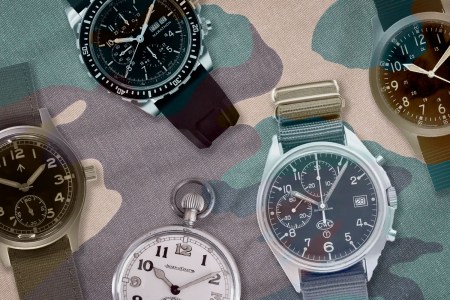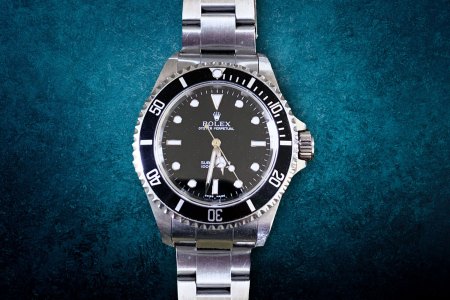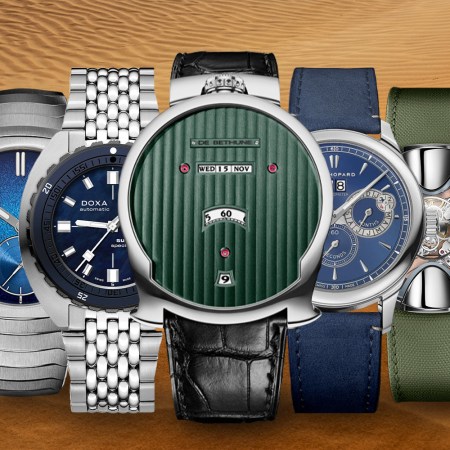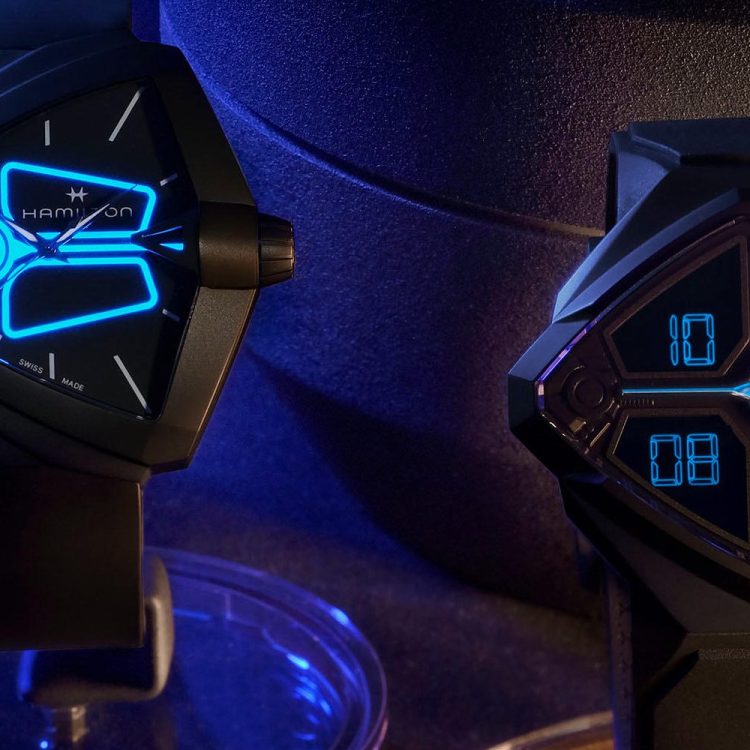Vintage reissues are all the rage in contemporary watchmaking.
This has been the case for the past decade, and the trend shows no signs of slowing down. It’s understandable, of course: We tech-obsessive, 21st-century types are positively engrossed in our phones, tablets, laptops, and flat-screen TVs to the point at which we’ve completely dissociated ourselves from the analog world. (And with nature, for that matter.) Who among us doesn’t long (even unconsciously) for a more analog time — one wherein people relied upon things like wristwatches as actual tools to get difficult jobs done, rather than as mere accessories, totems from a distant past?
Such longing is even more pronounced in the world of military watches, like the Marathon Navigator. Today, wristwatches are still necessary pieces of kit, but they’re almost always digital, and they’re almost never issued to soldiers as they once were. They’re certainly not the coveted “Mil-Subs” of yore, or the vaunted Seamaster 300s, or the rare “no-Rad” Fifty Fathoms. Make no mistake: there are soldiers who choose to use analog watches — even analog mechanical watches — myself included. But much of this use is induced by nostalgia, or by an infatuation with analog (and/or mechanical) wristwatches themselves.
All that being said, there’s very much still a place in the world for the military — or military-styled — wristwatch. These timepieces were built to specifications that required their being robust, accurate, reliable, legible and more. Which means that even when they’re not used in military settings, they perform admirably, living up to their reputation as pieces of (once-)essential kit. One of the last manufacturers focusing on this type of watch is Canadian company Marathon.
Everything to Know About Marathon Watches
As a military reservist and a military watch enthusiast, I’ve come to appreciate Marathon’s unique position in the contemporary watch industry. Not many marques that were established with the purpose of designing and producing mil-spec products have been able to continue making those products and also successfully widen their appeal to a civilian audience. (As I’ve mentioned before with respect to the brand, CWC and American Optical both also come to mind as other examples of once-niche companies that have made this transition). This expansion into the civilian sector is of course a necessary decision in a world in which the prevalence of issued military hardware is rapidly contracting, but it’s also, of course, simply good business.
Marathon continues to make mil-spec products, but it also understands the power and appeal of those products to a non-military watch enthusiast, and successfully markets to both. I’ve known both soldiers and civilians who use and rely upon its watches, and eagerly vouch for their build quality. I’ve even used them during reserve service, including lengthy live fire exercises and drills.
The Best Military Watches to Collect (And Why You Should Be Collecting Them)
They’re utilitarian, they’re handsome and, in many cases, they’re affordable.The ADANAC
Though Marathon has continued to produce its fibershell-cased Navigator for many years, the stainless steel variant — signed “ADANAC,” or “CANADA” backwards, and made in concert with Gallet — has never made an appearance in the contemporary catalog. This fairly rare piece, which dates to the 1980s, was a three-handed field watch housed in an asymmetric case that featured a screw-down crown and a highly legible dial with a 24-hour scale and tritium lume. Issued to American and Canadian forces, it was a pure tool watch that simply oozed utility — and it was a wildly cool object.
The fibershell version, which has long been available with or without a date window in various colors, is equally neat. The design remit came from a request from Kelly Field, a U.S. Air Force base, for a watch that could withstand use in extreme altitudes by pilots and parachutists. Affordable and available, they make for great field watches — but something about the heft and water resistance of the stainless steel version is unmistakably appealing. The “ADANAC,” generally only known to military watch enthusiasts, has achieved cult status, and a reissue was largely inevitable.
Thankfully, the day of said reissue has arrived: Meet the new Marathon 41mm Steel Navigator w/ Date (SSNAV-D). A reimagining of the “ADANAC” along modern lines, it resembles the original, 1980s version in most respects, though the addition of a date window at 4:30 is what we watch writer types typically call “a concession to modernity.” (Or, more accurately, a “necessary concession to modernity”; it’s only we enthusiasts who often prefer watches without dates. Most normal human beings like a date window. But I digress.)
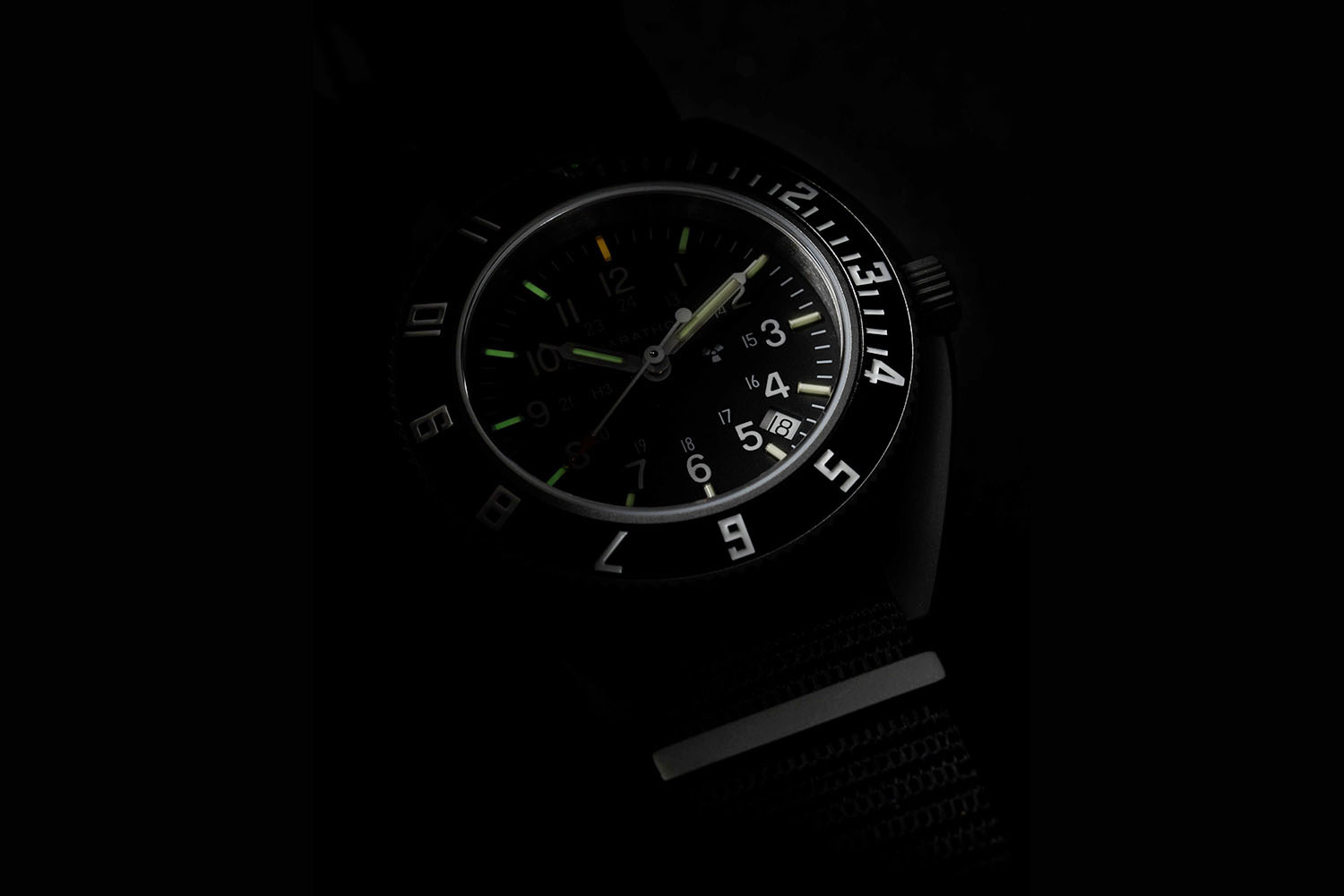
New: The Steel Navigator w/ Date (SSNAV-D)
Housed in a 41mm 316L parkerized stainless steel case, the SSNAV-D is debuting in two versions: on a black nylon “DEFSTAN” strap ($830), and on a black nylon ballistic strap ($800), the latter of which is available in both 11” and 12” lengths. The watch head has a modern sapphire crystal, a screw-down crown, a bi-directional 12-hour bezel insert with the first 20 minutes fully graduated, and 100m of water resistance. Measuring 20mm at the lugs, it’s 11mm thick.
Comparing the watch to a vintage ADANAC, eagle-eyed enthusiasts will notice some slight aesthetic differences stemming from the use of tritium tubes, a signature marker of modern Marathon watches, but a feature that wasn’t available in the 1980s: Whereas the ADANAC had a dial with painted tritium “dart” indices much like the GG-W-113 and MIL-W-43674 watches of the Vietnam era, the modern version features tritium tubes situated above the Arabic indices. The watch’s sword hands likewise feature tubes, and the Arabic typeface of the original has been updated slightly to a slightly blockier form that’s vaguely reminiscent of Art Deco designs.
Other than these few changes, there’s only one other thing that marks the SSNAV-D as a modern product: Namely, the date window at 4:30. Normally, when I see a 4:30 date window, I become a murderous ball of unfettered rage, (nearly) willing to go to prison in order to verbally (but not physically — that would be extreme) attack the person who made this travesty of a design decision. In this case, my guess is that Marathon put the date window here — as it has long done on the fibershell Navigators — so as to not interfere with the placement of both tritium tubes and the 24-hour scale on the dial. For this reason I’ll let it slide, though it hasn’t diminished my hatred for this dastardly debasement of an otherwise gorgeously well balanced dial. (Just put the goddamn thing at 3 o’clock and be done with it!!! There, I said it).
SSNAV-D: Water Resistence, Quartz Power and Aesthetic
Phew, I feel better. Back to the watch. While only 100m of water resistance means that the SSNAV-D doesn’t have the qualifications of, say, a Submariner, that was never the point of this model: If the 12-hour bezel wasn’t a dead giveaway, this is a field watch through and through, although a highly robust one. The Benrus Type I reissue — a decidedly similarly watch whose spiritual ancestor was issued to spooky types operating in Southeast Asia and elsewhere in the 1970s — features 300m of water resistance, but its namesake was in fact a dive watch, issued to UDT divers as well as, supposedly, CIA paramilitary officers. The fibershell Navigator, meanwhile, was issued to air crews and paratroopers, and meant for time-telling and navigation in the air and on dry land. The ADANAC was much the same.
Of course, as we all know, 100m of water resistance is plenty — especially if your watch has a screw-down crown. Most of us never SCUBA dive below 40m, so if you’re not SCUBA diving, we can’t really imagine a situation in which 100m of WR isn’t going to be sufficient. (I did get caught in a deluge once during a field exercise that I was sure was going to sweep away the entire battalion and deposit us on the tops of several nearby trees, but I can’t say that it had any adverse effect on the Submariner I was wearing at the time.)
Why You Should Buy One Watch and Do Everything In It
Or, how I learned to stop worrying and love the SubmarinerLike the ADANAC, the SSNAV-D is quartz-powered. A handy hatch on the caseback allows one to quickly change the small battery, which powers an ETA F06.412 high-precision quartz movement with three jewels. On-wrist, the watch is comfortable, highly legible, and precise — just like the ADANAC. The parkerized case makes for a non-reflective surface, which is certainly necessary in a military environment, and the tritium tubes mean that the lume doesn’t need to be “charged” in ambient light like Super-LumiNova — rather, it’s simply perpetually glowing. (It will fade over time, of course; tritium is radioactive, and has a half-life of about 12.3 years.)
The more I look at the new typeface used on the bezel, the more I appreciate it; its Art Deco leanings, though slightly less military-inspired than those of the ADANAC’s typeface, are both good looking and legible, and serve as a welcome metaphor for the expanding appeal of a contemporary military watch. The 41mm size, meanwhile, is just right; any larger, and I would’ve been disappointed.
Usability and 12-Hour Bezels
As has happened before, I had the opportunity to try out the SSNAV-D during some reserve service in the military. Unlike several years ago, during which I compared the fibershell Navigator and Mark II’s Paradive (a modern take on the Benrus Type I and II), this type my unit was tasked with guard duty for several weeks on end, rather than with live fire field exercises in which we really beat the shit out of our equipment in the rain. So while I can’t rightly claim to have “put the SSNAV-D through its paces” as I would’ve liked, I can safely say that it performed admirably on excessively long patrols, in dark bunkers, and while eating the same damn thing over and over and over again for days on end. (Oh, and lots of dishwashing. Lots and lots of dishwashing.)
The watch’s utility extends beyond use in the field, by the way: If you’re not familiar with 12-hour bezels — well, they’re magical things. Generally a watch bezel with a 12-hour scale is bidirectional, meaning one can quickly turn it either right or left. The 12-hour scale allows you to calculate a simple offset against 12 o’clock in order to track a second time zone. (If you live in New York City and you want to track Los Angeles time, you would move the bezel three clicks to the left until “9” lines up with the watch’s 12 o’clock, as L.A. is three hours behind New York.) Conveniently, the SSNAV-D also features fully graduated hash marks for the first 20 minutes, meaning you can also use the bezel as a timer in the same manner as that of a dive watch.
This arrangement is incredibly convenient, as it makes for a great travel watch as well as a dive watch. (A dive watch in a pinch, at least — technically, a dive watch needs to have a unidirectional bezel according to ISO standards, so that one can’t under-calculate bottom or decompression time.) TL;DR: The SSNAV-D is a multi-faceted timepiece, and one gives me a lot of joy to use. In fact, right now I have another patrol to hop on, during which the trusty SSNAV-D will be secured to my wrist, protected behind an elastic watch cover. Because while it will certainly perform admirably in myriad situations under different circumstances, the military is where it feels like this watch most belongs.
This article was featured in the InsideHook newsletter. Sign up now.

